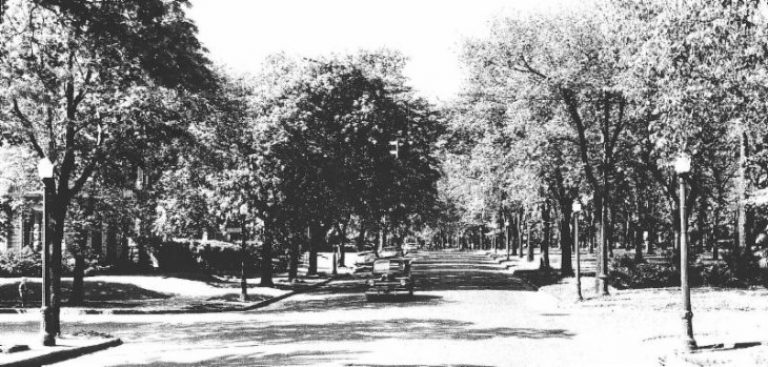Paving Paradise
Article by Kerry Traynor, extracted from “Remembering America’s Lost Buildings” at Rawstory.com
It might seem odd to lament the loss of a roadway; but Humboldt Parkway wasn’t just a road, it was an urban oasis of green parkland – a crucial component of a much larger park and parkway system.
In 1868, landscape architect Frederick Law Olmsted arrived in Buffalo, New York to design a park for the city.
Instead, he created a Park and Parkway System that consisted of six parks, seven parkways and eight landscaped circles. The brilliance of the plan, however, was in the parkways: over 200 feet wide, lined with elm trees and their canopies, they created a ribbon of green that wove its way through the city, connecting its parks and neighborhoods. Humboldt Parkway connected Delaware Park – Olmsted’s largest – with Humboldt Park.

Humboldt Parkway at Northland Avenue, c. 1953
Humboldt Parkway at Northland Avenue, c. 1953
But with calls for urban renewal in the 1950s and a growing dependence on the automobile, the city no longer saw the pastoral quality of Humboldt Parkway as an asset.
To city and state planners, Humboldt Parkway was the ideal location for an expressway – a highway that could carry automobiles to and from the suburbs and the downtown core, while relieving congestion on neighborhood streets.
In order to clear the way for the new highway – dubbed the Kensington Expressway – the state cut down trees, tore up the parkway and demolished homes. The new highway displaced families, divided neighborhoods by race and income and caused property values to plummet. As neighborhoods fell apart, businesses shuttered their doors.
Olmsted’s parkway had, quite literally, been paved over. As Joni Mitchell sings in her hit song “Big Yellow Taxi,” “They paved paradise / And put up a parking lot.”
